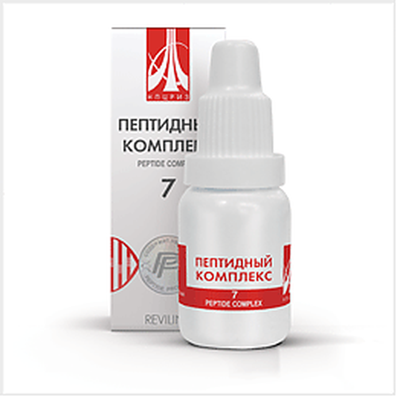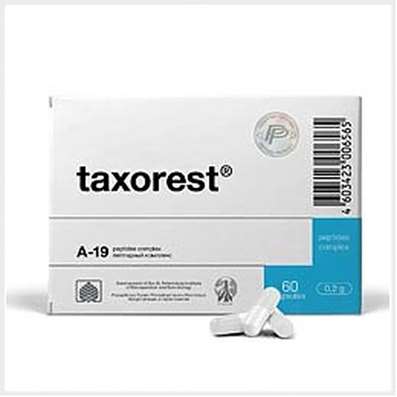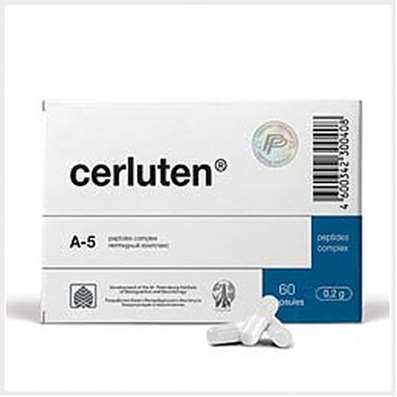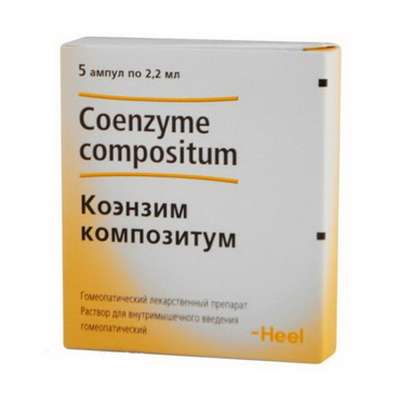Instruction for use: Strattera
I want this, give me price
Trade name of the drug – Strattera
Active substance: Atomoxetinum
À̉Ơ Code N06BA09 Atomoxetine
Pharmacotherapeutic group: Sympathomimetic drug
Nosological classification (ICD-10)
F90.0 Violation of activity and attention
CompositionCapsules 10 mg - 1 capsule.
Atomoxetine hydrochloride (equivalent to atomoxetine) 10 mg
Additional ingredients: dimethicone, pregelatinized starch
Shell composition of Capsule: titanium dioxide, sodium lauryl sulfate, gelatin
Capsules 18 mg - 1 capsule.
Atomoxetine hydrochloride (equivalent to atomoxetine) 18 mg
Additional ingredients: dimethicone, pregelatinized starch
shell composition of Capsule: titanium dioxide, sodium lauryl sulfate, gelatin, iron oxide yellow dye
Capsules 25 mg - 1 capsule.
Atomoxetine hydrochloride (equivalent to atomoxetine) 25 mg
Additional ingredients: dimethicone, pregelatinized starch
shell composition of Capsule: titanium dioxide, sodium lauryl sulfate, gelatin, indigo dye
Capsules 40 mg - 1 capsule.
Atomoxetine hydrochloride (equivalent to atomoxetine) 40 mg
Additional ingredients: dimethicone, pregelatinized starch
shell composition of Capsule: titanium dioxide, sodium lauryl sulfate, gelatin, indigo dye
Capsules 60 mg - 1 capsule.
Atomoxetine hydrochloride (equivalent to atomoxetine) 60 mg
Additional ingredients: dimethicone, pregelatinized starch
shell composition of Capsule: titanium dioxide, sodium lauryl sulfate, gelatin, iron oxide yellow dye, indigo dye
Description of Strattera
Capsules 10 mg - Hard gelatin size ¹3, opaque, white / white, with applied dosage "10 mg" and the identification code "Lilly 3227".
Capsules 18 mg - Hard gelatin size ¹3, opaque, yellow / white, with applied dosage "18 mg" and the identification code "Lilly 3238".
Capsules 25 mg - Hard gelatin size ¹3, opaque blue / white, with applied dosage "25 mg" and the identification code "Lilly 3228".
Capsules 40 mg - Hard gelatin size ¹3, opaque, blue / blue, with applied dosage "40 mg" and the identification code "Lilly 3229".
Capsules 60 mg - Hard gelatin size ¹2, opaque, blue / yellow, with applied dosage "60 mg" and the identification code "Lilly 3239".
The contents of capsules - a powder from white to almost white.
Characteristic
Centrally acting sympathomimetics.
Pharmachologic effect
sympathomimetic.
Pharmacodynamics
Atomoxetine is a highly potent inhibitor of presynaptic norepinephrine transporters. Atomoxetine has minimal affinity for other noradrenergic receptors or other receptors or transporters of neurotransmitters.
Atomoxetine does not apply to psychostimulants and is not derived from amphetamine. In clinical trials, the abolition of the drug were observed amplification of symptoms or any adverse events related to withdrawal syndrome.
Pharmacokinetics
Suction. Once inside Atomoxetine is rapidly and almost completely absorbed, reaching a Cmax in the plasma after about 1-2 hours. Atomoxetine is assigned regardless of the meal or during a meal.
Distribution. Atomoxetine is well distributed in the body. It has a high affinity to plasma proteins, primarily to albumin.
Metabolism. Atomoxetine undergoes primary metabolism with the participation of isoenzyme CYP2D6. The main image is oxidized metabolite 4-gidroksiatomoksetin glyukuroniziruetsya quickly. According to the pharmacological activity of a 4-equivalent gidroksiatomoksetin atomoxetine but circulates in plasma at much lower concentrations.
Although 4-gidroksiatomoksetin initially formed with the participation of CYP2D6, in individuals with insufficient activity of CYP2D6 4-gidroksiatomoksetin may form some other cytochrome P450 isoenzymes, but more slowly.
Atomoxetine does not inhibit CYP2D6 and increases the cycle.
Withdrawal. The average T1 / 2 Atomoxetine after ingestion of 3.6 hour in patients with severe metabolic and 21 hours in patients with reduced metabolism. Atomoxetine is mainly excreted in the urine as 4-gidroksiatomoksetin-O-glucuronide.
Pharmacokinetics in special clinical situations
Pharmacokinetics in children and adolescents with similar pharmacokinetics in adults. The pharmacokinetics of atomoxetine in children under 6 years of age has not been studied.
Indications for Strattera
Attention Deficit Hyperactivity Disorder (ADHD) in children 6 years of age and older, adolescents and adults.
Contraindications for Strattera
Hypersensitivity to the drug;
severe heart disease;
concurrent use with MAO inhibitors;
angle-closure glaucoma.
Precautions should use the drug in patients with arterial hypertension, tachycardia, cardiovascular diseases, severe physical congestion, while taking psychostimulants, sudden cardiac death in the family history, cerebrovascular, convulsive seizures in history, as well as conditions that may result in to hypotension.
Strattera Dosage and Administration
Inside.
When sleep disorders - 0.5 mg for 20-30 minutes before bedtime.
For the treatment of neurotic, psychopathic, neurosis and psychopathy-like states initial dose - 0.5-1 mg 2-3 times a day. After 2-4 days in view of efficacy and tolerability, the dose can be increased to 6.4 mg / day.
In severe agitation, fear, anxiety, treatment is initiated with a dose of 3 mg / day, quickly increasing the dose to produce a therapeutic effect.
In the treatment of epilepsy - 2.10 mg / day.
For the treatment of alcohol withdrawal - 2-5 mg / day.
The average daily dose - 1.5-5 mg, it is separated into 2-3 doses, usually 0.5-1 mg in the morning and afternoon, and 2.5 mg at night. In neurological practice for diseases with muscle hypertonicity appoint 2-3 mg 1-2 times a day.
The maximum daily dose - 10 mg.
In order to avoid the development of drug dependence at course treatment duration fenazepama application is 2 weeks (in some cases the duration of treatment can be increased up to 2 months). If you cancel Phenazepam reduce the dose gradually.
Pregnancy and breast-feeding
Clinical experience with Strattera during pregnancy is insufficient, so the drug should be used during pregnancy only if the expected benefit of therapy to the mother is much higher than the potential risk to the fetus.
It is not known if atomoxetine is excreted in breast milk. The appointment nursing mothers need careful preparation.
Side effect of Strattera
Children and adolescents
From the digestive system: very common (> 10%) - abdominal pain (18%, including the effects of abdominal discomfort, pain, and epigastric discomfort, discomfort in the stomach), decreased appetite (16%), vomiting (11%) ; often (1-10%) - constipation, dyspepsia, nausea (9%), anorexia. These side effects are temporary and usually does not require discontinuation of therapy. Due to reduced appetite in some patients at the beginning of treatment there was a reduction in body weight (average about 0.5 kg), body weight loss was greater at higher doses. After the initial weight loss in patients taking Strattera, noted a slight increase in body weight in long-term therapy. Growth rates (weight and height) after two years of treatment are near normal.
Nausea (9%) and vomiting (11%) are most likely to occur during the first month of treatment, usually mild to moderate severity, are temporary and do not cause discontinuation of treatment in a significant number of cases.
on the part of the cardiovascular system (0.1-1%) - palpitations, sinus tachycardia.
In placebo-controlled trials in children treated with Strattera, noted an average increase in heart rate of 6 beats / min, and the average increase Sad Dad - 2 mm Hg compared to placebo.
Patients treated with atomoxetine, orthostatic hypotension observed (0,2%, n = 7) and syncope (0,8%, n = 26), due to its effect on noradrenergic tone.
CNS: very common (> 10%) - somnolence (including sedation); often (1-10%) - irritability, mood swings, dizziness; sometimes (0.1-1%) - early morning awakening.
On the part of the organ of vision: common (1-10%) - mydriasis.
Dermatological reactions: often (1-10%) - dermatitis, rash; sometimes (0.1-1%) - itching.
Other: often (1-10%) - flu, fatigue, weight loss; sometimes (0.1-1%) - weakness.
Side effects in patients with slow metabolism of CYP2D6 substrates observed in 2% of cases, while in two more times, and the statistically more frequently than patients with a rapid metabolism of substrates CYP2D6: tremor (5.1 and 1.1%, respectively) , syncope (2.1 and 0.7%, respectively), conjunctivitis (3 and 1.5% respectively), early morning awakening (3 and 1.1% respectively), mydriasis (2.5 and 0.7%, respectively) .
Adults
In adults, the most common side effects associated with taking atomoxetine, observed from the gastrointestinal tract and urogenital tract. Serious adverse events during short or long-term treatment atomoxetine was not observed.
From the digestive system: very common (> 10%) - decreased appetite, dry mouth, nausea; often (1-10%) - abdominal pain (including effects of abdominal discomfort, pain, and epigastric discomfort, discomfort in the stomach), constipation, dyspepsia, flatulence.
CNS: very common (> 10%) - insomnia (difficulty falling asleep and include sleep disturbance at night); often (1-10%) - decreased libido, dizziness, sleep quality, sinus headache; sometimes (0.1-1%) - early morning awakening.
Since the cardiovascular system: often (1-10%) - flushing, palpitations, tachycardia; sometimes (0.1-1%) - the feeling of cold in the lower limbs; very rare (<0.01%) according to the spontaneous (postmarketing reports) - peripheral vascular reactions and / or Raynaud's syndrome, Raynaud's syndrome, the risk of recurrence.
In placebo-controlled studies in adults treated with Strattera, the average increase in HR was noted at 6 beats / min, the average increase Sad (about 3 mm Hg) DBP (about 1 mm Hg) compared to placebo.
From the urinary system: often (1-10%) - dysuria, difficulty urinating.
From the reproductive system: often (1-10%) - dysmenorrhea, abnormal ejaculation, lack of ejaculation, erectile dysfunction, erectile dysfunction, menstrual disorders, violation of orgasm; very rare (<0.01%), according to the spontaneous (postmarketing) reports - a painful or prolonged erection.
Skin and subcutaneous tissue: common (1-10%) - dermatitis, increased sweating.
Other: often (1-10%) - weakness, drowsiness, chills, weight loss.
Interaction
With simultaneous use of Strattera with .beta.2-adrenergic agonists may increase their effects on the cardiovascular system (this combination be used with caution). In healthy adult volunteers the effect of inhaled salbutamol in the standard dose of 200 mg on hemodynamic parameters were insignificant compared to the effect of the indicated dose of the drug with a / in the introduction. The simultaneous use of atomoxetine in the dose of 80 mg / day for 5 days have not resulted in an increase of these effects salbutamol. Heart rate after multiple inhalations of salbutamol 800 mcg characterized in conditions similar values as monotherapy, or in combination with the use of atomoxetine.
Co-administration of atomoxetine with drugs causing prolongation of the interval QT (neuroleptics, antiarrhythmics, moxifloxacin, erythromycin, tricyclic antidepressants, lithium carbonate), as well as drugs that cause electrolyte imbalance (diuretics), and inhibitors of CYP2D6, increases the risk of prolonging the QT interval.
Atomoxetine did not cause clinically significant inhibition or induction of cytochrome P450 isoenzymes, including SYP1A2, CYP3A, CYP2D6, and CYP2C9. Patients with severe metabolic substrates of CYP2D6 CYP2D6 inhibitors increase CSS atomoxetine in plasma at steady state to a level similar to that of patients with sustained metabolism of CYP2D6 substrates.
Based on in vitro studies suggest that administration of inhibitors of cytochrome P450 metabolism of patients with sustained CYP2D6 substrates does not increase the concentration in plasma atomoxetine. Patients treated with drugs CYP2D6 inhibitors, recommended a gradual dose titration Atomoxetine.
Because of possible effects on blood pressure Strattera should be used with caution in combination with drugs that affect blood pressure.
Medications that increase gastric pH (magnesium hydrochloride / aluminum hydroxide, omeprazole), have no effect on the bioavailability of atomoxetine.
Agents acting on the secretion of norepinephrine should be used with caution in conjunction with atomoxetine (due to synergy opportunities (gain) pharmacological effect).
Atomoxetine no effect on binding to plasma albumin warfarin, aspirin, diazepam, and phenytoin.
It requires careful while applying Atomoxetine with drugs that lower the threshold for seizure activity (antidepressants, neuroleptics, mefloquine, tramadol).
Dosing and Administration
Inside, regardless of meals or during meals, 1 time / day, in the morning.
Treatment should be under the supervision of a doctor who has experience of working with patients with attention deficit hyperactivity disorder.
In case of adverse events while taking the drug 1 times / day may be recommended for patients receiving 2 times / day, a dose division on the levee and the reception in the late afternoon or early evening.
Cancel the drug does not require a gradual reduction of the dose.
Children and adolescents with a body weight up to 70 kg the recommended initial daily dose is about 500 mg / kg and increased to a therapeutic daily dose of approximately 1.2 mg / kg, not earlier than 3 days. If there is no improvement in the condition of the patient, the total daily dosage may be increased up to a maximum dose of 1.8 mg / kg did not earlier than 2-4 weeks after initiation of treatment.
The recommended maintenance dose is approximately 1.2 mg / kg / day. The recommended maximum daily dose is 1.8 mg / kg or 120 mg.
In children and adolescents with a body weight up to 70 kg safety of single and total daily doses greater than 1.8 mg / kg have not been systematically evaluated.
Children and adolescents weighing over 70 kg and adults recommended initial daily dose is 40 mg or increased to a therapeutic daily dose of 80 mg not earlier than 3 days. In the absence of the patient's condition improved, the total daily dosage may be increased up to a maximum dose of 120 mg not earlier than 2-4 weeks after initiation of treatment.
The recommended maintenance dose is 80 mg. The recommended maximum daily dose is 120 mg.
In children and adolescents weighing more than 70 kg and safety in adults a single dose of 120 mg and the total daily dose of 150 mg has not been systematically evaluated.
In patients with moderate hepatic impairment (class B on a scale Child-Pugh) starting and supporting a therapeutic dose should be reduced to 50% of the usual recommended dose. In patients with severely impaired hepatic function (class C Child-Pugh) starting and supporting a therapeutic dose should be reduced to 25% of the usual dose.
In patients with severely impaired renal function (end-stage chronic renal failure), atomoxetine excreted from the body more slowly than in healthy individuals. However, when the dose correction differences were noted. Therefore Strattera medication can be prescribed to patients with ADHD with chronic renal failure, including end-stage, applying the usual dosing schedule. Atomoxetine can cause hypertension in patients with end-stage renal failure.
Rules of application capsules
Strattera capsules of the drug is not intended for dissection. Atomoxetine cause eye irritation. In case of contact with the capsule contents into the eye should be rinsed with water immediately and consult a doctor. Hands and contact surfaces should be washed with water.
Overdose of Strattera
Symptoms: The most common monotherapy - drowsiness, agitation, hyperactivity, conduct disorder and the gastrointestinal tract symptoms. Most events were mild to moderate in severity. Also showed signs and symptoms of the activation of the sympathetic nervous system of mild to moderate (eg mydriasis, tachycardia, dry mouth). All patients had regression of these symptoms. In some cases, seizures were observed.
Reported cases of fatal acute overdose while taking atomoxetine in combination therapy (with at least one drug).
Treatment: the appointment of activated carbon for the absorption limit, providing ventilation, monitoring heart activity and vital signs, and symptomatic and supportive treatment. If it was not long after taking the drug - gastric lavage. Due to the fact that atomoxetine has high affinity to plasma proteins by dialysis overdose treatment impractical.
SPECIAL INSTRUCTIONS for Strattera
Precautions should use the drug in patients with hereditary, congenital or acquired QT prolongation.
Symptoms of ADHD as impaired attention and hyperactivity (identified in more than one social environment, such as at home and at school) may manifest as lack of concentration, distractibility, excessive restlessness, impulsiveness, disorganization, restlessness, and other similar conduct disorders. ADHD diagnosis should meet the criteria of ICD-10.
Against the background of the drug in clinical trials in children and adolescents increases the risk of suicidal thoughts. In the course of 12 clinical studies in 2200 patients (including 1357 patients treated with Strattera, and 851 patients receiving placebo), one in the group treated with Strattera in 0.37% of cases were identified the development of suicidal thoughts (5 out of 1357 patients) placebo suicidal thoughts were not identified. During these clinical studies reported a suicide attempt, suicide was not completed.
In rare cases, patients taking Strattera, noted allergic reactions - rash, angioedema, urticaria.
Atomoxetine should not be used for at least 2 weeks after discontinuation of MAO inhibitors. MAOI treatment should not be initiated within 2 weeks after the cancellation of atomoxetine.
Many patients taking atomoxetine, there was a slight increase in pulse (mean <10 beats / min) and / or increase in blood pressure (mean <5 mm Hg). In most cases, these changes were not clinically significant effect. Cases of orthostatic hypotension are also marked.
Against the background of the use of stimulants, registered for the treatment of ADHD in US children with rough heart disease, in violation of its structure was identified an increased risk of sudden cardiac death. Atomoxetine is not classified as stimulants, as It is an alternative mechanism of therapeutic action in the treatment of ADHD. However, given the total registered indications for use (ADHD), caution should be exercised when using atomoxetine in patients with severe congestion, while taking stimulants, with a family history of sudden cardiac death. Atomoxetine should not be used in patients with heart disease rough.
It was reported about rare cases of serious liver injury in patients receiving atomoxetine. Patients with symptoms of jaundice or laboratory parameters identified which indicate liver dysfunction, treatment with atomoxetine should be abolished.
In clinical studies in adult patients with ADHD taking atomoxetine, the incidence of urinary retention was higher in comparison with the placebo group. Complaints potentially urinary retention may be regarded as the result of the use of atomoxetine.
You must stop taking atomoxetine in the case of seizures, which can not be explained by other reasons. Caution should be used atomoxetine in patients with a history of seizures.
The effectiveness of atomoxetine treatment for more than 18 months of treatment and safety of their more than 2 years have not been evaluated systematically.
Aggressive behavior or hostility is often observed in children and adolescents with ADHD. Irrefutable evidence that atomoxetine may cause aggressive behavior or hostility does not exist. However, in clinical studies of aggressive behavior or hostility were more frequent in children and adolescents taking atomoxetine (no statistically significant differences when compared with the placebo group). Patients receiving treatment for ADHD, requires supervision in respect of the appearance of their aggressive behavior or hostility.
There are cases of psychotic and manic symptoms, including hallucinations, delirium, and abnormal rise of mood during treatment with atomoxetine at therapeutic doses in children and adolescents. If you have any of these symptoms it is recommended to evaluate the extent of their connection with taking atomoxetine and, if necessary, to consider the abolition of the drug.
While taking atomoxetine following symptoms were observed: anxiety, agitation, panic attacks, insomnia, irritability, impulsivity, akathisia. Patients receiving atomoxetine, requires supervision in relation to the development of these symptoms.
Parents and relatives should carefully monitor the appearance of all of the above symptoms and suicidal thoughts in children and adolescents taking atomoxetine, and immediately report it to your doctor.
Safety and efficacy of Strattera in elderly patients have not been established.
Use in Pediatrics
In children under the age of 6 years is insufficient data on the safety and efficacy of atomoxetine.
Effects on ability to drive vehicles and management mechanisms
The drug may be accompanied by sleepiness. In this regard, patients taking Strattera, caution should be exercised in the management of high-risk mechanical means, including vehicle, as long as they are not sure that atomoxetine does not cause any disturbances.
Storage conditions of Strattera
In a dry, dark place at a temperature of 15-25 ° C.
Keep out of the reach of children.
Shelf life of Strattera
3 years.
Do not use beyond the expiration date printed on the package.
Conditions of supply of Strattera from pharmacies
On prescription.

 Cart
Cart





